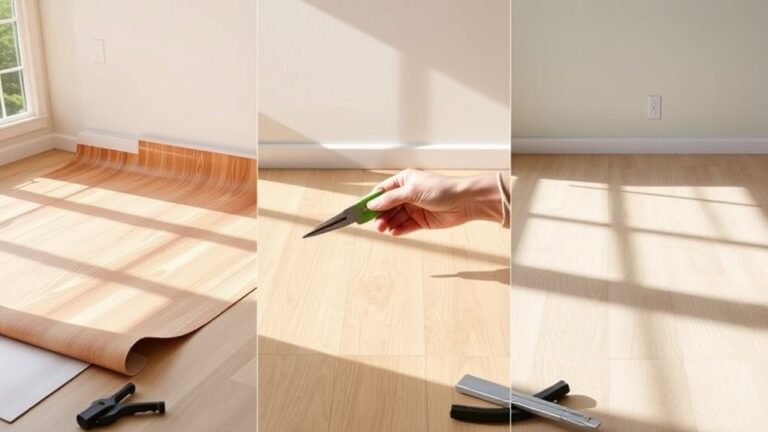To install a floor outlet in concrete, you’ll need to carefully mark the location, drill a hole, and then use a chisel or jackhammer to create a recessed area for the outlet box.

Choosing The Right Location
To install a floor outlet in concrete, choosing the right location is crucial. Several factors should be considered to ensure the ideal placement of the outlet. Measuring and marking the spot on the concrete floor accurately is the first step. Consider the layout of the room and the furniture arrangement to determine where the outlet will be most convenient and functional. Take into account the distance from walls and other obstacles to ensure easy access to the outlet. Additionally, ensure that the location will not interfere with any major structural components of the building. By carefully evaluating these factors, you can choose the best location for your floor outlet installation.
Gathering The Necessary Tools And Materials
To successfully install a floor outlet in concrete, you will need a set of essential tools and materials. The following tools are necessary for the installation process: hammer drill, drill bits, tape measure, wire stripper, screwdriver (flathead and Phillips), pliers, wire nuts, electrical tape, wire connectors, and a level.
In addition to the tools, there are several materials needed for a successful installation. These materials include a floor outlet box, electrical wire, outlet cover plate, concrete drill bit, concrete screws, and anchor bolts. The floor outlet box should be sturdy and suitable for use in concrete floors. The electrical wire must be of the appropriate gauge for the outlet and properly insulated. Concrete drill bits are designed to withstand the hardness of concrete and ensure precise drilling. Concrete screws and anchor bolts are necessary to secure the outlet box firmly to the concrete floor.
Clearing And Cleaning The Area
To install a floor outlet in concrete, it is crucial to start by clearing and cleaning the designated location. Start by removing any obstacles or debris that may hinder the installation process. Ensure that the concrete floor surface is thoroughly cleaned to provide a clean and smooth base for the installation. Use a broom or vacuum cleaner to remove any dust, dirt, or loose particles. In case of stubborn stains, consider using a mild detergent and a scrub brush to clean the area. Make sure to rinse off any cleaning solution thoroughly and allow the floor to dry completely before proceeding with the installation. By removing any obstacles and cleaning the area properly, you create a suitable environment for a successful floor outlet installation.
Drilling Holes In The Concrete
When it comes to installing a floor outlet in concrete, drilling holes in the concrete is a crucial step. To ensure success, it is important to select the right drill bit size and type. Firstly, consider the objective of the hole and choose the appropriate diameter accordingly. For example, if you need to accommodate a standard electrical box, a 2-inch hole would be suitable. Additionally, the type of drill bit is significant. Masonry bits are designed specifically for drilling into concrete and are equipped with a carbide tip for durability. Depending on the project, you may also consider using a hammer drill for added impact while drilling. It is recommended to follow a step-by-step process for drilling into the concrete. Begin by using a hammer to create a small pilot hole, which can then be expanded to the desired size using the appropriate drill bit. Remember to maintain a steady pace and apply consistent pressure to ensure clean and accurate holes.
Setting Up The Electrical Wiring
When installing a floor outlet in concrete, it is important to understand and follow electrical safety precautions. This involves ensuring that the power source is turned off before working on the wiring. Prior to connecting the wires to the outlet box, make sure to strip the ends of the wires and use wire nuts to secure them together. It is crucial to check that the connections are tight and secure to prevent any potential hazards.
Embedding The Outlet Box In Concrete
To install a floor outlet in concrete, embedding the outlet box is an important step. Start by choosing the appropriate size and type of outlet box. Consider the electrical requirements and the size of the wires that will be connected to the outlet. This will help determine the correct size of the box. Additionally, ensure that the outlet box is made of a durable material that can withstand the concrete’s weight and pressure.
Once you have the right box, it’s crucial to ensure proper alignment and anchoring. Use a tape measure to mark the desired location on the floor, taking into account nearby furniture or other obstacles. Next, create a hole in the concrete using a masonry drill bit. Make sure the hole is deep enough to accommodate the outlet box and any necessary wiring.
Finally, carefully align the box with the hole and gently press it into place. To secure the box, use concrete anchors or screws designed for this purpose. Make sure to tighten them securely to prevent any movement or dislodging of the box. With the outlet box embedded in the concrete, you can now proceed with the electrical connections and finishing touches of your floor outlet installation.
Installing The Outlet Cover Plate
Installing the outlet cover plate onto the outlet box involves securing it properly and adjusting it for a flush and polished finish. To secure the plate, begin by aligning it with the box and securing it in place using provided screws or screws of appropriate size. Ensure that the plate is tightly fastened to prevent any movement or wobbling.
Once the cover plate is secured, adjustments can be made to achieve a flush and polished look. Carefully inspect the plate’s positioning and make any necessary adjustments by slightly loosening the screws and repositioning the plate until it is perfectly aligned with the surrounding floor. Once aligned, tighten the screws to secure the plate in its final position.
After securing the cover plate, carefully examine the edges to ensure they are smooth and flush with the floor surface. Any rough or protruding edges can be carefully sanded or filed down to achieve a seamless finish. Pay attention to any gaps between the plate and the floor, as these can be filled with a suitable floor sealant to create a polished appearance.
Verifying The Electrical Connection
To ensure a proper installation of a floor outlet in concrete, it is crucial to conduct a thorough electrical inspection. This process involves testing the functionality of the floor outlet before beginning any flooring installation.
Start by checking for any visible damage to the floor outlet itself, such as cracks or exposed wires. Additionally, ensure that there is no water or moisture present in the surrounding area, as this could pose a safety hazard.
Next, use a non-contact voltage tester to confirm that the outlet is receiving power. Simply place the tester near the outlet and observe whether it indicates the presence of electricity. If there is no reading, check the circuit breaker to see if it is in the “off” position.
It is important to note that if you are not familiar with electrical work, it is best to consult a qualified electrician to perform this inspection. They will have the necessary expertise to identify any electrical issues and ensure the safety of the installation process.
Applying Finishing Touches
Once you have installed a floor outlet in concrete, it is important to apply the finishing touches to ensure a seamless integration within your overall floor design. Concealing the outlet with an appropriate floor material is key to maintaining the aesthetic appeal.
If you have a wooden floor, you can use matching wood planks to create a harmonious look. Make sure to cut a hole in the plank to accommodate the outlet. For tile floors, you can purchase a tile that matches your existing flooring and cut a hole for the outlet. Be sure to use a waterproof adhesive to secure the tile in place.
When installing carpet, you can cut a slit in the carpet and use a carpet trim to cover the edges around the outlet. This will create a neat and professional finish. Alternatively, for concrete floors, you can use a floor outlet cover plate that blends seamlessly with the rest of the floor, ensuring a discreet installation.
Frequently Asked Questions For How To Install A Floor Outlet In Concrete
How Do You Install A Floor Outlet In Concrete?
To install a floor outlet in concrete, start by cutting a hole in the concrete floor using a diamond blade saw. Next, insert a conduit into the hole and run the electrical wiring through it. After that, install the outlet box and secure it to the floor with concrete screws.
Finally, connect the wiring to the outlet and test it to ensure it is working properly.
Can You Install A Floor Outlet Without Cutting Concrete?
Yes, it is possible to install a floor outlet without cutting concrete. One option is to use a floor box that is designed to be installed on top of the existing floor surface. These floor boxes typically have adjustable heights to accommodate different flooring thicknesses.
Another option is to use a surface-mounted floor outlet that can be installed on the surface of the floor without the need for any cutting or drilling.
What Are The Benefits Of Installing A Floor Outlet In Concrete?
Installing a floor outlet in concrete has several benefits. Firstly, it provides a convenient and discreet power source for devices in the middle of a room. Secondly, it eliminates the need for unsightly extension cords running across the floor. Lastly, it allows for flexibility in arranging furniture and prevents tripping hazards.
Overall, a floor outlet enhances the functionality and aesthetics of a space.
Conclusion
Installing a floor outlet in concrete can be a straightforward process if you follow the right steps. By preparing the area, choosing the right outlet box, and properly positioning the electrical wires, you can ensure a safe and efficient installation.
Remember to consult a professional electrician if you are unsure about any steps, and always prioritize safety. With these guidelines in mind, you can successfully add a floor outlet to your concrete space and enjoy the convenience it provides.




